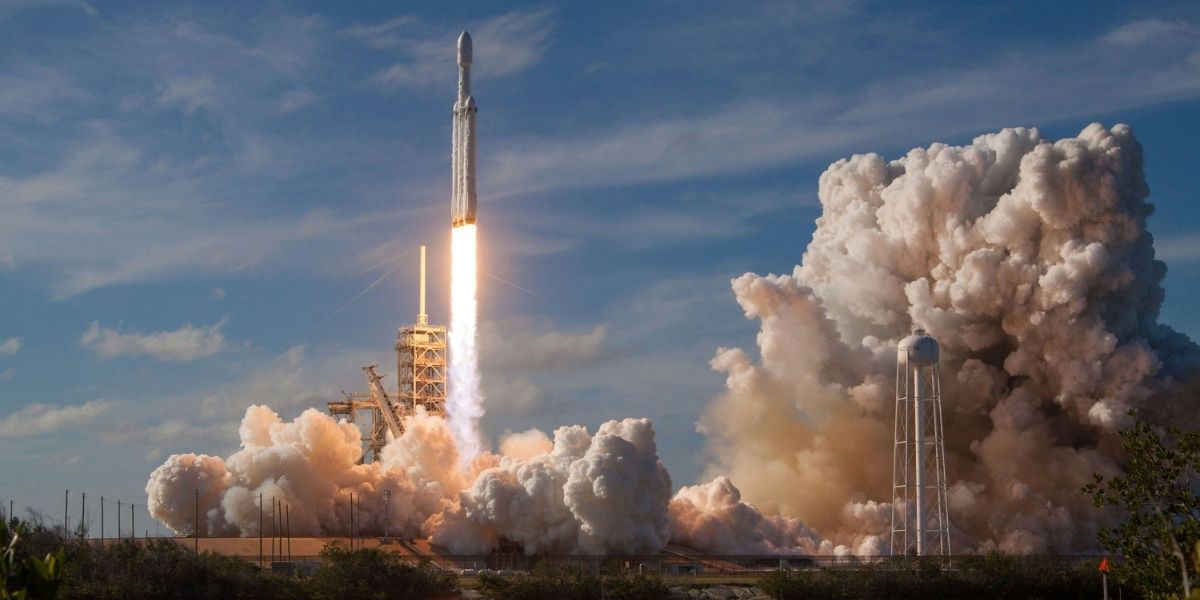In today’s fast-paced world, consumers expect quick, efficient services, and this has had a profound effect on the e-commerce industry. The growing trend of rush orders, where customers demand expedited delivery of their online purchases, is reshaping the way retailers operate. With the rise of same-day delivery, one-hour shipping, and on-demand fulfillment, e-commerce businesses are under pressure to meet these growing demands for speed and convenience. This article explores the rise of rush orders in e-commerce, the factors driving this trend, the challenges it presents, and how businesses are adapting to meet consumer expectations.
The E-Commerce Revolution: A Demand for Speed
The growth of e-commerce over the last decade has revolutionized the retail landscape. Online shopping offers unmatched convenience, allowing customers to browse, purchase, and have products delivered from the comfort of their homes. However, one key drawback of traditional online shopping is the waiting period between placing an order and receiving it.
Consumers have grown accustomed to instant gratification in many aspects of their lives, and e-commerce is no exception. From streaming content to food delivery, the demand for faster services continues to rise. In this environment, speed is not just a luxury—it’s an expectation. The result is the rapid growth of rush orders, where consumers are willing to pay a premium for expedited shipping and quick deliveries.
The Role of Big Players like Amazon
Amazon has been at the forefront of setting the pace for fast delivery in e-commerce. With its introduction of Amazon Prime, offering two-day and even same-day delivery, the company has set a new standard for speed in the industry. In fact, Amazon’s focus on fast shipping has significantly influenced consumer behavior, with many shoppers now expecting expedited delivery as the norm.
Amazon’s ability to scale its logistics network to handle a vast number of rush orders has been a critical factor in the success of the company. The integration of advanced technology, such as artificial intelligence (AI) for inventory management and automated warehouses, allows Amazon to fulfill orders with unprecedented speed and efficiency. Other e-commerce platforms have followed suit, recognizing that the demand for faster shipping is no longer optional but a competitive necessity.
Factors Driving the Rise of Rush Orders
Several factors have contributed to the surge in rush orders within the e-commerce sector. These include technological advancements, changing consumer behavior, and the competitive nature of the industry. Let’s explore these factors in more detail.
Changing Consumer Expectations
Today’s consumers have become accustomed to near-instant gratification, driven by the immediacy of digital services like social media, streaming platforms, and food delivery apps. This has led to a shift in how consumers approach e-commerce. When shopping online, customers expect to receive their items quickly, and many are willing to pay extra for expedited delivery.
The COVID-19 pandemic further amplified this demand for faster deliveries, as people turned to online shopping as their primary means of acquiring goods. With traditional in-store shopping less accessible during lockdowns, the pressure for e-commerce retailers to provide fast, reliable delivery options grew even more.
Consumers now have less patience for long wait times and are increasingly expecting the same speed they experience with digital services in their shopping experiences. As a result, rush orders have become a critical element of customer satisfaction.
Technological Advancements and Logistics
Technology has played a crucial role in enabling faster deliveries. Innovations such as AI-powered inventory management, real-time tracking, drones, and automated warehouses have significantly improved the speed and efficiency of order fulfillment. E-commerce businesses can now predict consumer demand, track orders in real-time, and optimize delivery routes for faster shipping times.
For instance, retailers like Walmart and Target have implemented sophisticated logistics networks and partnerships with delivery services like Postmates and DoorDash to enable same-day and even one-hour delivery for select products. These technologies allow businesses to streamline operations and meet consumer expectations for rapid fulfillment.
Additionally, fulfillment centers and last-mile delivery systems have been optimized to handle rush orders more efficiently. The ability to store goods closer to customers, through decentralized warehouses, has reduced delivery times significantly.
The Influence of Subscription Services and Fast Fashion
In recent years, subscription services and fast fashion have played an important role in the rise of rush orders. Many subscription-based companies, such as Stitch Fix, and fashion retailers like Zara and H&M, have capitalized on the demand for quick shipping to entice consumers to shop frequently.
Consumers can now sign up for services that offer regularly scheduled deliveries or can place single orders with the expectation that they will receive their items quickly. This trend has expanded to other sectors as well, including groceries, health products, and electronics. The desire for convenience and the promise of fast delivery options make these services increasingly attractive to customers, encouraging a culture of “instant shopping.”
The Challenges of Rush Orders for E-Commerce Businesses
While the rise of rush orders presents opportunities for e-commerce businesses, it also introduces several challenges. These challenges can strain logistics networks, increase operational costs, and create pressure on businesses to continuously innovate. Let’s explore some of the key challenges associated with managing rush orders.
Increased Operational Costs
One of the primary challenges of rush orders is the higher cost of expedited shipping. Businesses must invest in advanced logistics networks, including specialized fulfillment centers, additional staff, and faster delivery vehicles. While customers are often willing to pay a premium for rush orders, the costs of providing fast shipping can significantly impact a retailer’s bottom line.
For businesses that don’t have the infrastructure of large corporations like Amazon, the logistics and fulfillment costs of meeting rush order demands can be prohibitive. The operational burden of managing rush orders requires significant investment in technology, personnel, and resources.
Supply Chain Complexities
A fast-paced e-commerce environment requires seamless coordination across the supply chain, from inventory management to delivery. Managing rush orders requires retailers to have accurate real-time data on stock availability, efficient fulfillment processes, and optimized delivery routes.
However, disruptions in the supply chain—whether due to unforeseen events like natural disasters, a surge in demand during peak seasons, or logistical issues—can delay rush orders. Retailers must constantly fine-tune their supply chain operations to maintain fast, reliable service, and even a small mistake in the supply chain can lead to delays and customer dissatisfaction.
Sustainability Concerns
The demand for rush orders also raises sustainability concerns. Faster deliveries often require more resources, including fuel for expedited shipping, which contributes to increased carbon emissions. This has led to growing concern among consumers and advocacy groups about the environmental impact of expedited shipping.
As a result, many e-commerce businesses are under pressure to find ways to balance the demand for fast delivery with sustainability goals. Some companies are exploring green shipping options, like electric vehicles, and carbon-offset programs to reduce the environmental impact of rush orders.
Strategies for Meeting the Demand for Rush Orders
In response to the rising demand for rush orders, e-commerce businesses are adopting several strategies to improve delivery speed, reduce costs, and enhance customer satisfaction. Here are some of the key strategies being implemented:
Same-Day and One-Hour Delivery
To stay competitive, many e-commerce retailers are offering same-day and one-hour delivery options, often in partnership with local delivery services like DoorDash or Postmates. By leveraging localized fulfillment centers and improving the efficiency of last-mile delivery, businesses can meet consumer demands for near-instant gratification.
For example, companies like Amazon and Walmart now offer same-day delivery for certain products, allowing customers to place orders in the morning and have their items arrive by evening. By investing in local fulfillment centers, e-commerce retailers can cut down on delivery times and meet customer expectations for fast shipping.
Subscription Models and Loyalty Programs
Some e-commerce companies are leveraging subscription models or loyalty programs to meet the demand for rush orders. These models offer customers the benefit of faster shipping as part of their subscription or membership package, which can encourage repeat business and customer retention.
Amazon Prime, for instance, has set the bar for fast and reliable delivery by offering members access to exclusive services like free two-day shipping, same-day delivery, and early access to sales events. This membership model has become a key factor in driving repeat purchases and boosting customer loyalty.
Intelligent Supply Chain Management
Advanced technologies, such as AI and machine learning, are increasingly being used to optimize supply chain management. By using data analytics, e-commerce businesses can predict demand more accurately, manage inventory more efficiently, and optimize delivery routes to ensure that rush orders are fulfilled on time.
Intelligent supply chain systems allow companies to respond quickly to fluctuations in demand, reducing the risk of stockouts and delays. Automation in warehouses and fulfillment centers also plays a critical role in speeding up the order fulfillment process, ensuring that rush orders are processed and shipped quickly.
A New Era of E-Commerce Fulfillment
The rise of rush orders is reshaping the e-commerce landscape, as consumers demand faster, more efficient services. Driven by technological advancements, changing consumer expectations, and the competitive pressures of the e-commerce industry, businesses must adapt to meet the growing demand for expedited shipping.
While the rise of rush orders presents challenges—such as increased costs, supply chain complexities, and environmental concerns—e-commerce companies are finding innovative ways to address these issues. Through the use of advanced technologies, localized fulfillment centers, and new delivery models, businesses are successfully navigating the world of rush orders while continuing to meet consumer expectations for speed and convenience.
As the demand for faster delivery continues to grow, e-commerce companies must stay ahead of the curve by embracing new solutions that offer both speed and sustainability. The future of e-commerce will be defined by its ability to deliver on the promise of instant gratification while maintaining efficiency, customer satisfaction, and environmental responsibility.









